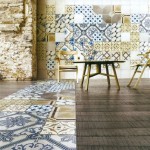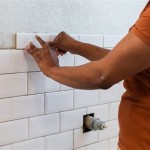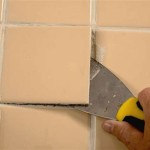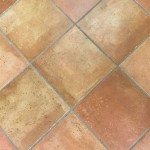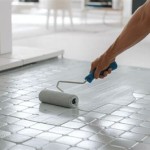Beauty And Durability Of Old Bathroom Tiles In Honduras
Honduras, a country rich in history and culture, possesses a unique architectural heritage that extends beyond its colonial buildings and ancient Mayan ruins. Embedded within the fabric of Honduran homes, particularly in older structures, are often overlooked elements offering glimpses into the past: old bathroom tiles. These tiles, beyond their functional purpose, represent a significant aspect of Honduran craftsmanship, reflecting both the aesthetic preferences and the available resources of bygone eras. Their beauty lies not only in their visual appeal but also in their remarkable durability, a testament to the materials and techniques employed in their creation.
The use of ceramic tiles in Honduran bathrooms dates back several decades, reaching its peak in popularity during the mid-20th century. During this period, locally sourced materials and imported influences intertwined to create distinctive styles. While modern construction often favors large-format tiles and synthetic materials, the old bathroom tiles of Honduras offer a tangible connection to the country's past. They evoke a sense of nostalgia and provide insights into the evolving tastes and construction practices of previous generations.
The enduring appeal of these older tiles stems from several factors, including the quality of the materials used, the craftsmanship involved in their production and installation, and the unique designs that characterize different periods. Investigating these tiles reveals a wealth of information about Honduran history, artistry, and the resourcefulness of its people.
The Enduring Quality of Materials
A primary contributor to the longevity of old bathroom tiles in Honduras is the inherent quality of the materials used. Unlike some modern, mass-produced tiles that prioritize cost-effectiveness over durability, older tiles were often crafted from high-quality clay and other natural resources. The specific composition of the clay, sourced from local deposits, contributed to the tile's strength and resistance to wear and tear. This local sourcing also meant that the tiles were well-suited to the Honduran climate, able to withstand humidity and temperature fluctuations.
The manufacturing process itself also played a crucial role. Traditional methods, often involving hand-pressing or small-scale production, allowed for greater control over the density and consistency of the tile. This resulted in a product that was less prone to cracking, chipping, and water absorption. The glazing process, another critical step, further enhanced the tile's durability. Old glazes often contained lead, which, while posing health concerns in modern contexts, created a remarkably tough and resilient surface that resisted staining and scratching. The lead content contributed to the vibrant and long-lasting colors found in many vintage Honduran bathroom tiles.
Furthermore, the thickness of the old tiles significantly contributed to their robustness. Compared to many contemporary tiles, older tiles were considerably thicker, providing a greater buffer against impact and stress. This additional thickness also offered improved insulation, helping to regulate bathroom temperature. Even after decades of use, many of these tiles remain in excellent condition, a testament to the superior materials and manufacturing techniques employed.
The mortar used to set the tiles also played a substantial role. Traditional mortars, often composed of lime, sand, and other natural additives, created a strong and flexible bond that allowed the tiles to move slightly with the building's natural settlement. This flexibility prevented cracking and ensured that the tiles remained firmly in place even under stress. The careful selection and preparation of these materials, combined with the skilled craftsmanship of the installers, contributed significantly to the enduring durability of old Honduran bathroom tiles.
The Artistry of Honduran Tile Designs
Beyond their inherent durability, old bathroom tiles in Honduras possess a distinct artistic charm that reflects the cultural influences and aesthetic preferences of the time. The designs found on these tiles range from simple geometric patterns to intricate floral motifs and even stylized depictions of local flora and fauna. These designs were not merely decorative; they were often integral parts of the overall bathroom aesthetic, contributing to a sense of elegance and sophistication.
The colors used in old Honduran bathroom tiles are particularly noteworthy. Vibrant hues of blue, green, yellow, and red were common, often combined in bold and contrasting patterns. These colors were derived from natural pigments and minerals, resulting in a rich and saturated palette that has stood the test of time. The use of these vibrant colors reflected the Honduran culture, which is steeped in color and artistic expression.
The patterns themselves often drew inspiration from a variety of sources. Some designs reflected European influences, particularly those from Spain, while others incorporated indigenous motifs and symbols. This blending of cultural influences created a unique and distinctly Honduran style. The tiles often incorporated repeating patterns, creating a sense of visual harmony and order. The careful arrangement of these patterns demonstrated the skill and artistry of the tile designers and installers.
The texture of the tiles also contributed to their aesthetic appeal. Some tiles featured a smooth, glossy finish, while others had a more textured or matte surface. This variety of textures added depth and dimension to the bathroom design. The use of embossed or raised patterns was also common, creating a tactile element that further enhanced the visual interest of the tiles. The intricate designs and vibrant colors of old Honduran bathroom tiles serve as a reminder of the artistic heritage of the country.
Preservation and Appreciation of Historical Tiles
As modern renovations continue to transform Honduran homes, it is increasingly important to recognize the value of these old bathroom tiles and to prioritize their preservation. These tiles represent a tangible link to the country's past and offer a valuable glimpse into its architectural and artistic heritage. Rather than discarding them during renovations, homeowners and contractors should consider ways to incorporate them into the new design or to carefully remove and store them for future use.
One approach to preservation is to simply retain the original bathroom layout and design, preserving the tiles in their original context. This may involve repairing damaged tiles or restoring faded colors, but it allows for the continued enjoyment of these historical elements. Another option is to salvage the tiles during renovations and reuse them in other areas of the home or in new construction projects. This allows for the tiles to be appreciated in a new setting while still retaining their historical significance.
Cleaning and maintenance are also crucial for preserving the beauty and durability of old bathroom tiles. Gentle cleaning methods, using mild soaps and soft cloths, are recommended to avoid damaging the glaze or scratching the surface. Abrasive cleaners and harsh chemicals should be avoided. Regular cleaning can help to prevent the build-up of dirt and grime, ensuring that the tiles continue to look their best for years to come.
Furthermore, raising awareness about the value of these old tiles is essential. Educating homeowners, contractors, and the general public about their historical significance can help to ensure that they are treated with respect and appreciation. Local historical societies and preservation organizations can play a key role in promoting the preservation of these valuable architectural elements. By recognizing and celebrating the beauty and durability of old bathroom tiles in Honduras, we can help to ensure that they continue to be enjoyed and appreciated for generations to come.
The story of old bathroom tiles in Honduras is a testament to the enduring power of craftsmanship, the resourcefulness of local communities, and the importance of preserving our architectural heritage. These tiles, often overlooked, offer a unique window into the past, revealing valuable insights into Honduran history, artistry, and culture. Their beauty and durability serve as a reminder of the enduring qualities of traditional materials and techniques, and their preservation is crucial for ensuring that future generations can appreciate and learn from this valuable legacy.

Beautiful Mediterranean Ceramic Tiles For Your Home Décor Ramirro

Best Mosaic Tiles For Bathroom Kitchen Art Decoration Wall Floor Buyer S Guide Ramirro

Best Onyx Tiles Collection 2025 By Ramirro Ceramica Floor Wall Specialist

5 Bathroom Tile Trends In 2024

Anti Slip Skid Bathroom Floor Tiles Design Real Granito

Travertine Effect Tiles In Porcelain Stoneware

Best Mosaic Tiles For Bathroom Kitchen Art Decoration Wall Floor Buyer S Guide Ramirro

Rocko Tiles Pda Waterproof And Durable Wall Panels

181 Innovative 3d Tile Designs For Modern Spaces Buy Wall Ramirro

Tile Combinations For Modern Bathrooms
Related Posts


